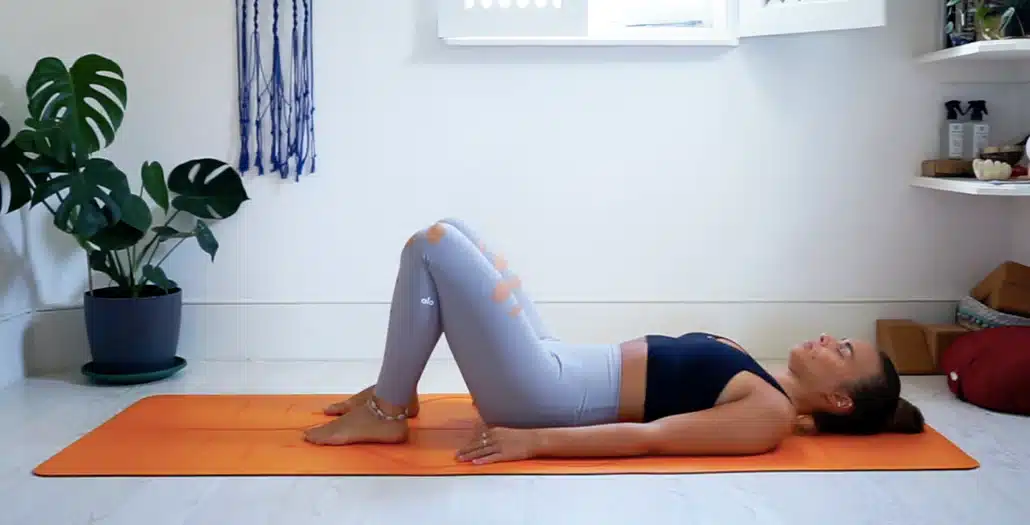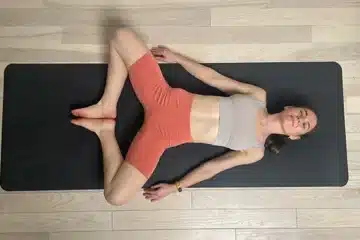Breathing is a fundamental aspect of yoga practice, with profound effects on the body, mind, and spirit. When it comes to managing back pain, incorporating specific breathing techniques can enhance relaxation, alleviate tension, and promote healing in the spine and surrounding muscles.
In this article, we’ll explore various yoga breathing techniques that can help relieve back pain and provide greater comfort and ease in your practice.
Understanding the Connection Between Breath and Back Pain
The breath serves as a bridge between the body and mind, influencing physiological processes such as heart rate, blood pressure, and muscle tension.
When we experience stress or discomfort, the breath often becomes shallow and constricted, exacerbating tension in the body and intensifying sensations of pain.
By cultivating conscious awareness of the breath and practicing intentional breathing techniques, we can soothe the nervous system, release muscular tension, and create space for healing and relaxation in the back.
The Benefits of Yoga Breathing Techniques for Back Pain Relief
Yoga breathing techniques, also known as pranayama, offer a powerful means of managing back pain by addressing its physical, emotional, and energetic aspects. Here are some benefits of incorporating pranayama into your back pain relief regimen:
- Relaxation of Muscles: Deep, diaphragmatic breathing encourages relaxation of the muscles surrounding the spine, including the erector spinae, rhomboids, and trapezius muscles. By promoting relaxation in these muscles, pranayama helps alleviate tension and stiffness in the back, reducing sensations of pain and discomfort.
- Increased Circulation: Conscious breathing techniques enhance circulation throughout the body, delivering oxygen and nutrients to the muscles and tissues of the back. Improved circulation supports tissue repair and regeneration, facilitating healing and reducing inflammation associated with back pain.
- Stress Reduction: Pranayama techniques activate the parasympathetic nervous system, also known as the “rest and digest” response, which counteracts the body’s stress response. By inducing a state of relaxation and calm, pranayama reduces levels of cortisol and other stress hormones, which can contribute to back pain and tension.
- Improved Posture: Breath awareness promotes mindfulness of body alignment and posture, encouraging individuals to maintain a neutral spine and avoid slouching or hunching over. By cultivating awareness of posture, pranayama helps prevent strain on the back and supports proper spinal alignment, reducing the risk of back pain and injury.
- Enhanced Mind-Body Connection: Pranayama practices deepen the connection between the body and mind, fostering greater awareness of sensations, thoughts, and emotions. By cultivating mindfulness and presence, individuals can develop a more compassionate and accepting relationship with their bodies, which can support healing and resilience in the face of back pain.
Yoga Breathing Techniques for Back Pain Relief
- Diaphragmatic Breathing (Deep Belly Breathing):
- Find a comfortable seated or lying position with hands resting on the abdomen.
- Inhale deeply through the nose, allowing the belly to expand fully.
- Exhale slowly and completely through the nose or mouth, drawing the navel towards the spine.
- Continue for several rounds, focusing on the smooth, rhythmic movement of the breath in the abdomen.
- Three-Part Breath (Dirga Pranayama):
- Sit or lie comfortably with hands resting on the belly, ribcage, and chest.
- Inhale deeply into the belly, allowing it to expand fully.
- Continue to inhale, filling the ribcage with breath and expanding the sides of the torso.
- Finally, inhale into the chest, feeling the collarbones lift slightly.
- Exhale slowly and completely, releasing the breath from the chest, ribcage, and belly.
- Repeat for several rounds, coordinating the movement of breath with the expansion and contraction of the torso.
- Alternate Nostril Breathing (Nadi Shodhana):
- Sit comfortably with a straight spine and close the right nostril with the right thumb.
- Inhale deeply through the left nostril, filling the lungs completely.
- Close the left nostril with the right ring finger and release the right nostril.
- Exhale slowly and completely through the right nostril.
- Inhale through the right nostril, then close it and release the left nostril.
- Continue alternating nostrils for several rounds, focusing on the smooth, even flow of breath.
- Ujjayi Breath (Victorious Breath):
- Sit or lie comfortably with a relaxed jaw and slightly constricted throat.
- Inhale deeply through the nose, making an audible sound like the ocean waves (if comfortable).
- Exhale slowly and audibly through the nose, maintaining the slight constriction in the throat.
- Continue for several rounds, allowing the sound of the breath to soothe and calm the nervous system.
Incorporating Pranayama into Your Back Pain Relief Routine
To experience the full benefits of yoga breathing techniques for back pain relief, consider incorporating the following practices into your daily routine:
- Set Aside Time for Pranayama Practice: Schedule dedicated time each day for pranayama practice, even if it’s just a few minutes of deep breathing or alternate nostril breathing. Consistency is key to reaping the benefits of these techniques.
- Integrate Pranayama into Your Yoga Practice: Incorporate pranayama techniques into your regular yoga practice, either at the beginning to center and prepare the mind or at the end to promote relaxation and integration. Experiment with different techniques to discover which ones resonate most with you.
- Practice Mindful Breathing Throughout the Day: Take moments throughout your day to pause and connect with your breath. Whether you’re sitting at your desk, standing in line, or walking outdoors, bring awareness to your breath and take several deep, conscious breaths to ground and center yourself.
- Listen to Your Body: Pay attention to how your body responds to different pranayama techniques and adjust your practice accordingly. If a particular technique causes discomfort or strain, explore alternative practices or consult with a qualified yoga instructor for guidance.
Conclusion
Yoga breathing techniques offer a gentle and effective means of managing back pain by promoting relaxation, enhancing circulation, and fostering a deeper connection between the body and mind.
By incorporating pranayama into your back pain relief routine, you can cultivate greater awareness, resilience, and well-being, supporting healing and vitality in your journey toward optimal spinal health.
Embrace the transformative power of the breath and discover the profound healing potential within you.




